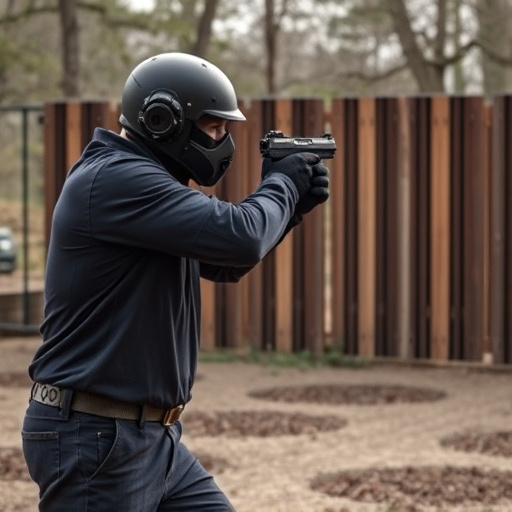The text explores the Best Safety Features in Stun Guns, highlighting key distinctions between projectile (like tasers) and contact stun devices. Both types emphasize safety through features like adjustable voltage, trigger locks, range limits, and automated shut-offs. Projectile models further protect bystanders with probe retention and safety triggers, while contact devices rely on visible lights and ergonomic designs to prevent user injury. Choosing a stun gun involves considering these advanced safety mechanisms, along with integrated LED flashlights and digital displays for informed usage.
In the realm of personal safety, stun weapons offer a powerful deterrent against potential threats. This article delves into the critical distinction between projectile and contact stun devices, examining their unique safety features. From the range and accuracy of projectiles to the direct impact of contact weapons, we explore key considerations for users seeking optimal protection. Discover the best safety mechanisms in stun guns, ensuring peace of mind while navigating today’s challenges.
- Understanding Projectile and Contact Stun Weapons
- Safety Features in Projectile Stun Guns
- Key Safety Considerations for Contact Stun Devices
- Comparison of Safety Mechanisms Across Weapon Types
- Choosing the Best Stun Gun for Optimal Safety
Understanding Projectile and Contact Stun Weapons
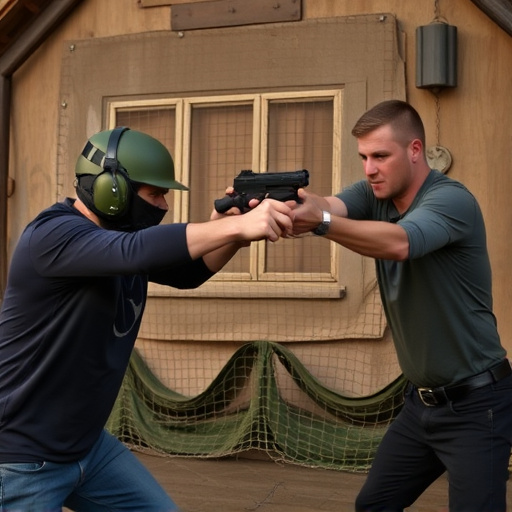
Stun weapons are designed to incapacitate an opponent temporarily, and they come in two primary types: projectile and contact stun devices. Projectile stun guns, like tasers, fire electrical probes that deliver a high-voltage, low-current electric shock from a safe distance. These weapons are popular for their non-lethal nature and the option to disable an assailant quickly. The electric current disrupts muscle control in the body, causing the person to experience temporary paralysis.
Contact stun weapons, on the other hand, require physical contact to deploy their effect. Stun batons and handheld stun devices use electrical energy to cause a strong jolt when touched or held against an aggressor. Unlike tasers, these tools don’t fire probes but rather rely on direct contact. The best safety features in stun guns often include automated safety switches, self-defense modes, and adjustable voltage settings, ensuring users can control the level of force applied while minimizing risks to bystanders and themselves.
Safety Features in Projectile Stun Guns
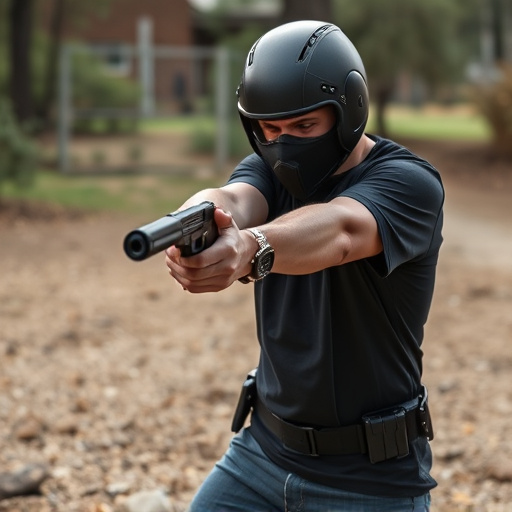
The best safety features in stun guns, particularly projectile stun guns, are designed to minimize risk and ensure responsible use. One of the primary safety mechanisms is the range limit, which prevents users from accidentally deploying the device at close range where it could cause severe harm or permanent injury. This feature ensures that the stun gun’s impact is felt but not severe enough to leave lasting effects.
Additionally, many modern projectile stun guns incorporate safety switches and trigger locks, making them unusable unless intentionally activated. These safeguards help prevent accidental discharge and keep the device secure when not in use. Some models also feature adjustable intensity settings, allowing users to choose a level of force appropriate for the situation, thereby enhancing safety by minimizing the risk of overusing or misusing the weapon.
Key Safety Considerations for Contact Stun Devices
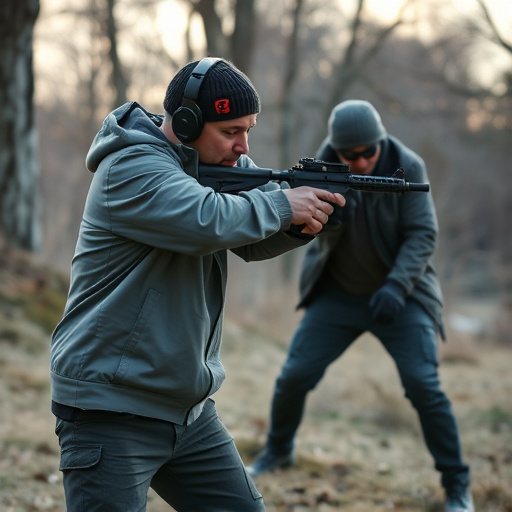
When considering contact stun devices, such as stun guns or electroshock weapons, safety should be the top priority. Key safety considerations include proper training and handling to ensure accurate deployment without accidental discharge, which could cause harm to oneself or others. Stun devices must have reliable safety mechanisms, like trigger locks or safety switches, to prevent unwanted activation.
Best Safety Features in Stun Guns often include multiple safety settings, allowing users to adjust the intensity based on their level of comfort and threat assessment. Additionally, durable construction that withstands harsh conditions and regular maintenance routines are crucial for long-term reliability and safety. Always follow manufacturer guidelines and local laws regarding stun weapon usage to ensure responsible ownership and minimize potential risks.
Comparison of Safety Mechanisms Across Weapon Types
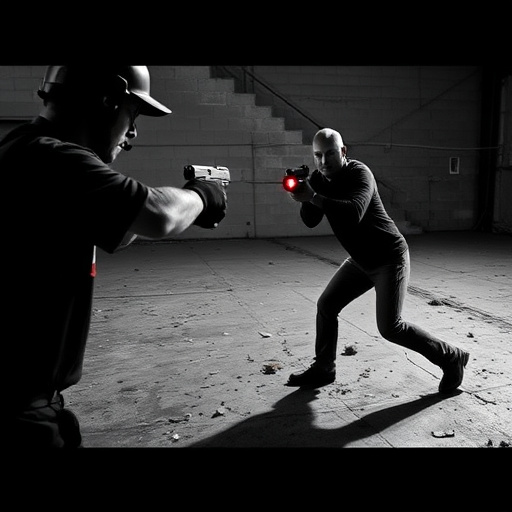
When comparing projectile and contact stun weapons, understanding their safety mechanisms is paramount. Projectile stun guns, such as tasers, operate by firing electrical probes that disrupt muscle control in the target, causing temporary incapacitation. These weapons are designed with built-in safety features like range limits, probe retention, and safety triggers, ensuring minimal risk to bystanders. Additionally, their use is often accompanied by extensive training to prevent misuse and accidental injuries.
In contrast, contact stun devices, including traditional stun guns and batons, rely on direct physical contact to deliver a strong electric shock. They typically incorporate features like adjustable voltage settings, safety switches, and built-in lights for enhanced visibility. The best safety features in stun guns include automatic shut-off mechanisms after discharge, which prevent prolonged or accidental use. Moreover, some models offer ergonomic designs that reduce the risk of user injury during intense situations, making them safer alternatives for self-defense purposes.
Choosing the Best Stun Gun for Optimal Safety
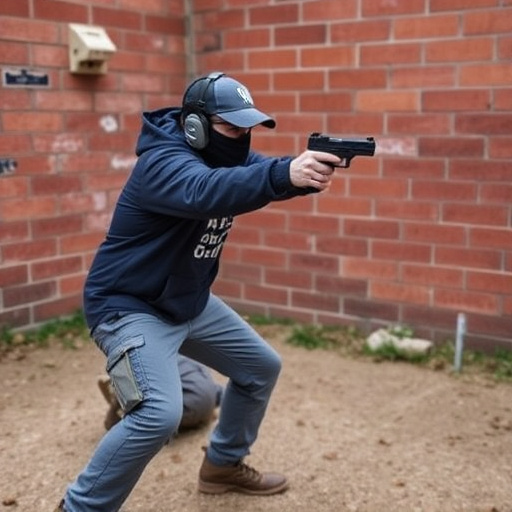
When selecting a stun gun for optimal safety, it’s crucial to focus on models that incorporate advanced safety features designed to prevent accidental discharges and protect users from harm. Look for tools with built-in safety mechanisms such as trigger locks, safety switches, and control settings that allow you to adjust the stun intensity based on your situation. These features ensure responsible use, minimizing the risk of accidental injuries or unintended consequences.
The Best Safety Features in Stun Guns include ergonomic designs that enhance grip and reduce the chances of slips or misfires. Additionally, models with LED flashlights integrated into the device offer improved visibility during low-light conditions, enabling you to assess your surroundings better. Some advanced stun guns also feature digital displays showing battery life, stun intensity levels, and other crucial data, enhancing user control and safety awareness.
When choosing a stun weapon, understanding the differences between projectile and contact options is crucial. Both have unique safety features; projectiles offer remote deployment with safety catches, while contact devices rely on rapid activation and user-controlled intensity. Considering your needs, environment, and comfort level with each type is essential for making an informed decision. By carefully evaluating these factors, you can select the best stun gun that balances power, reliability, and the most suitable safety mechanisms for your personal or professional use.
